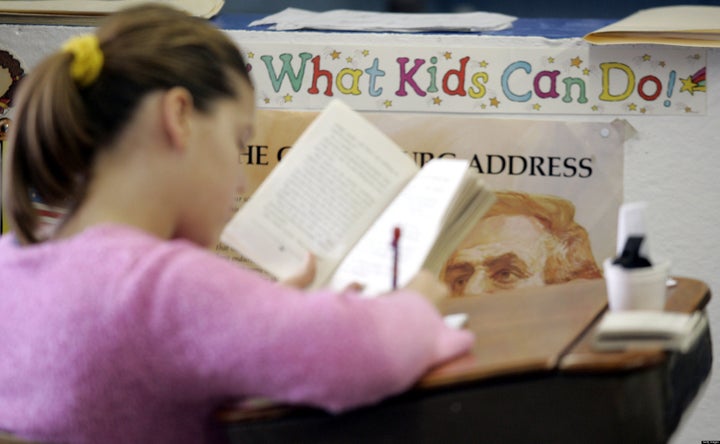
A few minutes after the start of fourth period, a student whom I do not know walks into my classroom, smiling.
"How are you?" he says. Behind him, another student appears in the doorway, and then, two more. These, I know. One will come again during eighth period.
"I am fine, how are all of you?"
"We are good," they say, "but we were kicked out of Social Studies."
I'm told that sweatshirt hoods need to be tucked into the backs of sweatshirts, in Social Studies class, and during the tucking-in process, one of the boys was having a bit of difficulty, causing the three kids near him to, well, laugh. I imagine that directing such fabric into a rather tight neckline behind your head could prove difficult, or, God forbid, funny. I wonder what pedagogic reason has motivated its concealment. It seems awfully uncomfortable.
"Can we stay here?" the students ask.
This sort of thing happens at least three times a week. Kids come to my room seeking cover, which I gladly give them, along with a little conversation and an English assignment. I feel as if I'm harboring fugitives.
In the past month, infractions warranting expulsion from class and a zero for the day, according to those charged, have included throwing a pencil up into the air and catching it, yawning and talking to the kid in the next seat. Granted, I have not witnessed the particular breaches of conduct and do not know if, in fact, mayhem or loss of life ensued because of them, but I have seen nothing on the news.
This kind of punishment disturbs me for a variety of reasons. First, the notion of punishment at a place of learning disturbs me. If you chastise people, they won't want to learn. If you yell at them and expel them from the premises and never check to see that they are okay, they won't learn, particularly from you. These students, who, by the way, represent a cross-section of kids, are told, simply to leave the class; the teachers do not tell them where to go or when to come back, if at all. At the public middle school where I teach, an entire grade is taught in about 15 portable classrooms. So, when a kid is thrown out, he is thrown out into the street. He can walk off of school property. He can get frostbite. So, the message becomes, "We don't care what happens to you, physically or intellectually." That is not a good message.
Second, the kids who come to my class seem sincerely upset by the practice. They know what warrants unacceptable behavior. They have seen police officers haul kids off in handcuffs for fighting on the playground during lunch. If they were to disrupt a room of people, they would know it. These are not those kinds of kids. The child who yawned is an A student. He got the best grade, out of 400, on an essay writing test. At a school where the majority writes on a third grade level, he should be prized. He told me that many teachers have no patience.
Administrators like to toss around the words, "control," and "manage." Can the teacher "control" the students? Is she proficient at "classroom management?" Are all the sheep with the herd? I think that if a teacher removes a student for playing with a pencil, she has lost. She has failed to think of a solution that serves the student, the class and herself.
It just seems obvious that if a kid likes to manipulate writing implements, it might make sense to stand him up in front of the board with a marker. Make him The Taker of Notes. If a kid yawns, invite him to lead the class in a three-minute stretch. If a kid likes to chat, pair him up with someone who doesn't. You know, use common sense, based on human nature. Child nature. Parent nature. Would you throw your own child into the wilderness and lock the door behind him?
"It's a beautiful day," I say to the kids with the sweatshirt problem. "You know, you could have played around on the field, by that corner where no one can see you. But you came here to work on commas."
"Yeah," they say.
"I think that's great. Thank you for doing that."
At the end of class, I tell them to be smarter than their teachers. You need the Social Studies. Get the Social Studies, even if you have to stick a wad of fleece between your scapula. I give them a parting gift on the way out, their very own "When To Use Commas" hand-out, hot off the press. They thank me and take off down the portable steps, slipping into the crowd on the way to lunch.